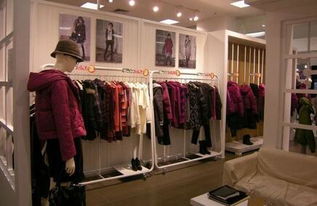开间服装店游戏
Title: Starting a Clothing Store: Budget Considerations and Essential Expenses
Starting a clothing store can be an exciting venture, but it requires careful planning, especially when it comes to budgeting. Here's a breakdown of the expenses you can expect and some guidance on how to manage your finances effectively.
1. Initial Investment:
The amount of money needed to start a clothing store can vary widely depending on factors such as location, size of the store, target market, and inventory selection. Here are some key expenses to consider:
Rent:
This will likely be one of your biggest expenses. The cost of renting a retail space can vary significantly depending on the location and size of the store. Consider factors such as foot traffic, visibility, and proximity to your target market when choosing a location.
Inventory:
You'll need to purchase inventory to stock your store. The cost will depend on the type of clothing you plan to sell, the number of brands you carry, and your pricing strategy. Consider starting with a smaller inventory and expanding as your business grows to minimize initial costs.
Fixtures and Equipment:
You'll need racks, shelves, hangers, cash registers, and other equipment to set up your store. These costs can add up, so prioritize essential items and consider buying used equipment to save money.
Decor and Design:
Creating an inviting atmosphere is important for attracting customers. Budget for expenses such as painting, flooring, lighting, signage, and decorations to enhance the visual appeal of your store.
Licenses and Permits:
Depending on your location, you may need to obtain business licenses, permits, and insurance coverage. Research the requirements in your area and budget accordingly.
Marketing and Advertising:
Building awareness and attracting customers will require marketing efforts. Budget for expenses such as signage, flyers, online advertising, and promotions to promote your store and attract customers.2. Ongoing Expenses:
Once your store is up and running, you'll need to budget for ongoing expenses to keep your business running smoothly. Some common ongoing expenses include:
Rent and Utilities:
Factor in monthly rent payments, as well as utilities such as electricity, water, and internet.
Inventory Replenishment:
Continuously replenishing your inventory is essential to keep your store stocked with fresh merchandise. Monitor sales trends and adjust your inventory accordingly to avoid overstocking or running out of popular items.
Employee Wages:
If you plan to hire employees, budget for their wages, benefits, and payroll taxes. Consider starting with a small team and expanding as your business grows to manage labor costs.
Maintenance and Repairs:
Regular maintenance of your store, equipment, and fixtures is necessary to ensure everything is in working order. Budget for expenses such as cleaning, repairs, and equipment upgrades to maintain a professional appearance.
Marketing and Promotions:
Allocate funds for ongoing marketing and promotional activities to attract new customers and retain existing ones. Explore costeffective strategies such as social media marketing, email campaigns, and loyalty programs to maximize your marketing budget.3. Financial Planning and Management:
To ensure the financial success of your clothing store, it's essential to develop a comprehensive budget and financial plan. Here are some tips to help you manage your finances effectively:
Track Expenses:
Keep detailed records of all your expenses, including receipts and invoices. Tracking your expenses will help you identify areas where you can cut costs and optimize your spending.
Monitor Cash Flow:
Maintain a positive cash flow by carefully managing your inventory, expenses, and sales revenue. Monitor your cash flow regularly and take proactive steps to address any cash flow challenges that may arise.
Forecast Sales:
Develop sales forecasts based on historical data, market trends, and seasonal variations. Use your sales forecasts to plan your inventory purchases, staffing levels, and marketing strategies effectively.
Seek Financing if Needed:
If you need additional funds to start or grow your clothing store, explore financing options such as small business loans, lines of credit, or investment from friends and family. Be sure to compare interest rates, terms, and repayment options to find the best financing solution for your needs.Starting a clothing store requires careful planning and financial management, but with the right budgeting strategies and a solid business plan, you can set yourself up for success. By accurately estimating your expenses, managing your finances effectively, and staying adaptable to market changes, you can build a thriving clothing store that attracts loyal customers and generates sustainable revenue.
Conclusion:
Starting a clothing store requires careful planning and budgeting to ensure financial success. By accurately estimating your expenses, managing your finances effectively, and staying adaptable to market changes, you can build a thriving clothing store that attracts loyal customers and generates sustainable revenue. With the right budgeting strategies and a solid business plan, you can set yourself up for success in the competitive retail industry.











